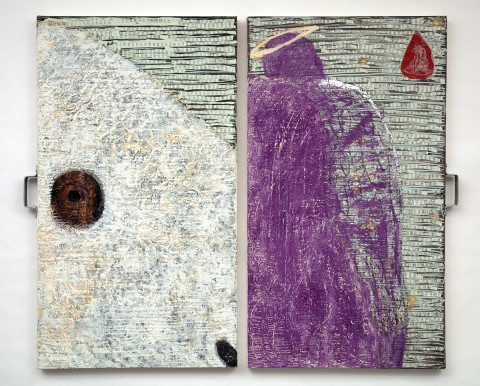Last Scapegoat—A Requiem, by Alfonse Borysewicz

Catholic painter Alfonse Borysewicz often takes inspiration from scriptural passages and liturgical rites. He has created an impressive body of work that hangs not only in galleries and private collections but in churches, monasteries, and seminaries from Brooklyn to Grand Rapids, Michigan. In this work, the background is formed from shredded musical scores. The requiem, traditionally played at a funeral mass, here takes on physical form, as if rent and stained by ash like a mourner’s garments. In the right-hand corner, set within an outsize drop of blood, the Man of Sorrows bows his head and weeps. Whether it is for himself, the figure in front of him, or humanity in general is unclear. Yet for all these signs of grief, the mysterious figure in the foreground rises in regal purple, festooned with the roughly sketched feathers of an angel and a homespun halo. Grief still structures the composition—an unsettling cacophony playing in the background for all those with eyes to see and ears to hear—but it does not reign. If the amorphous white form on the left is a scapegoat, it has not faded away in ignominy but has risen again. The work’s ambivalent title becomes a prayer: perhaps this scapegoat truly is the last.





